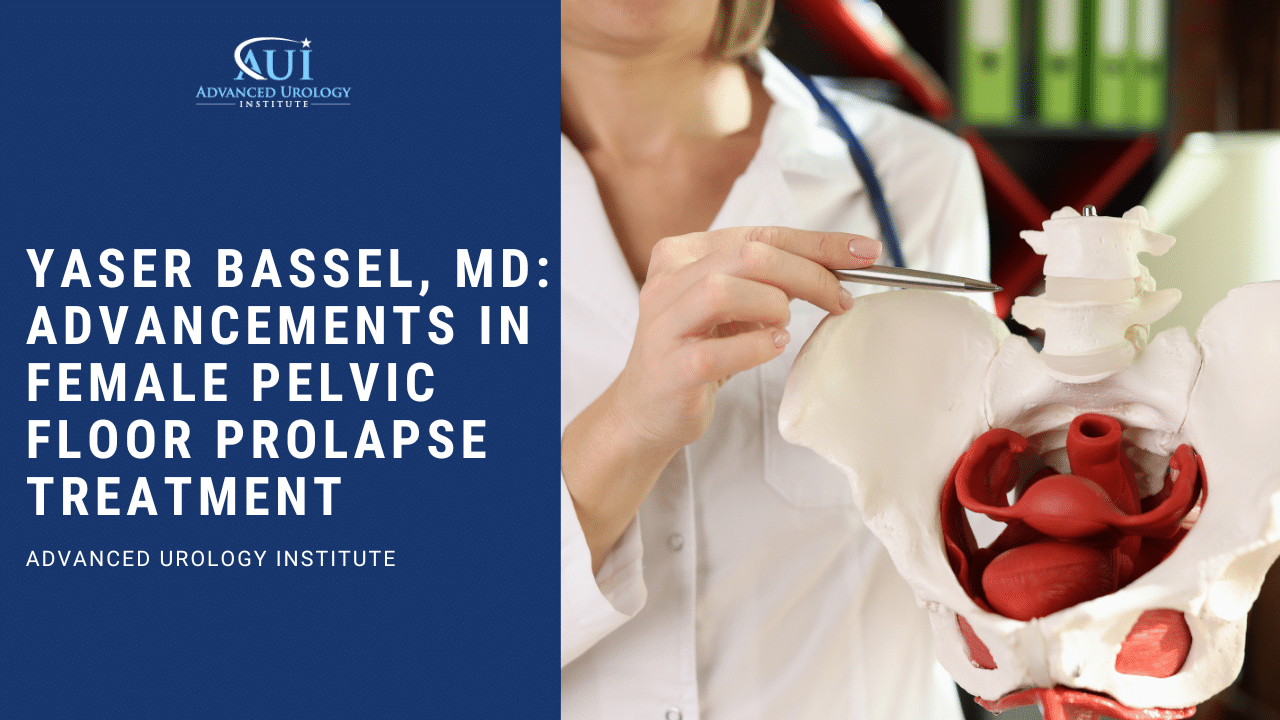Bladder prolapse might seem inconvenient, but leaving it untreated can result in complications like UTIs and recurrent prolapses.
Continue readingYaser Bassel, MD: Advancements in Female Pelvic Floor Prolapse Treatment
Exploring Innovative Solutions for Women’s Health 🩺 Yaser Bassel, MD: Advancements in Female Pelvic Floor Prolapse Treatment
Continue readingPelvic Organ Prolapse: An Overview
 There are awkward conditions, and then there is pelvic organ prolapse. It is uncomfortable, upsetting and embarrassing.
There are awkward conditions, and then there is pelvic organ prolapse. It is uncomfortable, upsetting and embarrassing.
With pelvic organ prolapse (POP), there is a bulge at the opening of your vagina, which occurs because one or more of your pelvic organs has slipped or dropped down from their normal position. The organ can be your womb (uterus), bladder, bowel or the top of your vagina.
How does pelvic organ prolapse occur?
Well, usually, the pelvic organs—the uterus, vagina, bladder, and rectum—are propped and held in place by the muscles and tissues of the pelvic floor. But when these muscles weaken, the pelvic organs drop downwards into or out of the vagina.
Female Pelvic Medicine and Reconstructive Surgery at AUI
Treatment Options Available for Pelvic Organ Prolapse
A pelvic organ prolapse involves the drooping of pelvic organs due to a weakness in the muscles of the pelvic floor. When this happens, the bladder, the small intestine, the rectum, the uterus or the upper vaginal wall drops into the vagina. The condition disrupts the urine flow and can affect the reproductive function by making it difficult, uncomfortable or painful to have sexual intercourse.
The condition can be treated by:
1. Physical exercise
Kegel exercises can strengthen pelvic muscles. The exercises involve a woman imagining she has to urinate, then instead of letting it out, she squeezes her muscles to hold it in. It is recommended to repeat the exercises 10 to 15 times a day.
2. A pessary
This is a ring-like device that is inserted into the vagina to hold the affected organ in its proper place.
3. Pelvic Reconstructive Surgery
 Reconstructive surgery is a testimony to how much technology has improved the practice of medicine. In cases of pelvic organ prolapse, the surgery is performed to restore the affected organ to its proper place. There are different types of reconstructive surgery, depending on the type of organ prolapse being treated. Whatever the type of reconstructive surgery, however, it is a minimally invasive procedure.
Reconstructive surgery is a testimony to how much technology has improved the practice of medicine. In cases of pelvic organ prolapse, the surgery is performed to restore the affected organ to its proper place. There are different types of reconstructive surgery, depending on the type of organ prolapse being treated. Whatever the type of reconstructive surgery, however, it is a minimally invasive procedure.
Even though it is effective, not every patient qualifies for reconstructive surgery. Some factors that must be considered include:
- When a woman intends to have children. The surgery may be discouraged because the prolapse may return after the birth.
- Age. Younger women may be advised not to have the surgery because of the risk that it may recur and they are more likely to have a child in the future, increasing the risk of a recurrence.
- When one has a serious illness, it may be advisable not to have the surgery so as to avoid complications.
The well being of the patient is a top priority at AUI. A female patient with organ prolapse will not only receive the most advanced treatments available, the team also will listen to her questions and work with her on a plan of treatment that is best suited to her needs. AUI makes it a priority to provide information on the topic of pelvic organ prolapse and to be available to discuss any concerns. For more information, visit the Advanced Urology Institute website.






